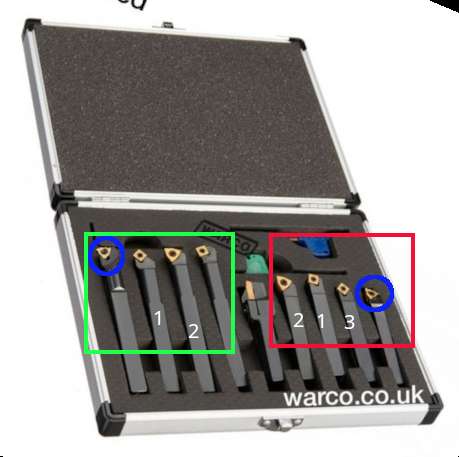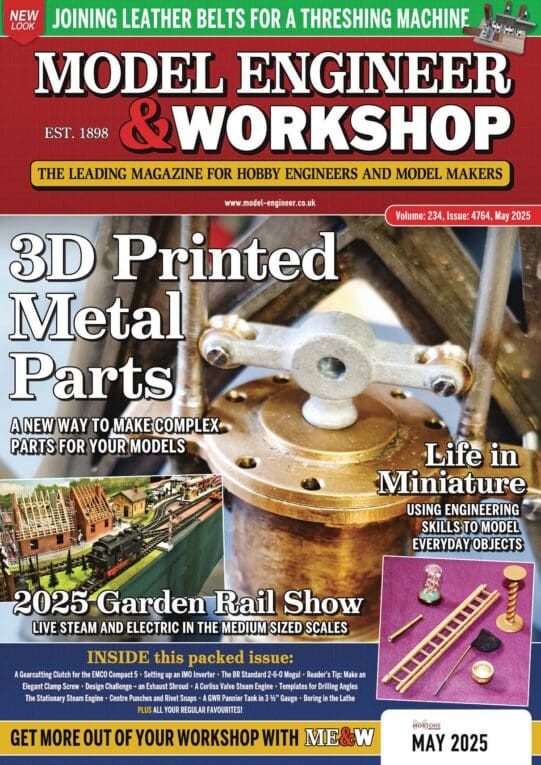Conventional wisdom is against buying sets, but my advice is give them the benefit of the doubt. Those who don’t like sets, I think, are those who already have tooling, perhaps using indexed inserts to supplement HSS, or already have a good understanding of what they need. They are in the happy position of being able to save a few bob! Beginners are different.
Beginners benefit more from sets because the tools provided become part of the learning experience. I was told I would never use some of the tools, which turned out to be wrong, though it took me 5 years in one case! It is true that a few tools get used far more than others. Another major beginner advantage is sets allow newbies to get on with exploring what’s what. A weekend spent playing with a new lathe, some free-cutting Steel, Aluminium, Brass and a box set of cutters won’t be wasted.
I think rejecting sets on principle is too simple. The value of a set depends on how good a fit the tools are to the needs of the purchaser. So look at what’s in the set and engage brain. My example is from Warco chosen because it’s typical, and because I’ve not had a problem with Warco tooling! The contents suit me fairly well, but aren’t for everyone. I’ve colour coded and numbered the tools for reference. Let’s pick this innocent set apart.

The tools ringed in blue are for threading inserts. Probably metric if the set is bought anywhere in the world apart from North America, but check. Fairly obviously, a pair of metric threading tools won’t be valuable in an Imperial only workshop. And likewise, a pair of unified thread cutters aren’t much cop in a metric shop. Good or bad? It depends on what your workshop needs.
The tools boxed in Green are for internal use – 3 boring bars and an internal threader. Of the boring bars, I mostly use type 2, with a dash of #1. Again, whether the set selection is good or bad, depends. In my case, I don’t do much internal work, so the set is slightly over-provisioned. I wasted a few quid, so what.
The tools boxed in Red are for external cutting. They’re all useful in my workshop. My criticism is that a tool is missing – I need Right and Left hand versions of #2.
The unringed tool in the centre is a front-mounting parting-off tool. Even though I prefer parting-off with a rear-mounted blade because it’s idiot proof, its often quicker to part-off from the front because set-up time is much reduced. Unfortunatetly trouble-free parting-off from the front requires more rigidity than most small lathes have, and the machine having a powered cross-slide helps enormously. This tool works well on my WM280, but would be hopeless on a mini-lathe. Anyone use this type on a Myford? My gut feel is their rigidity is borderline for parting-off with carbide, especially with the tool held in a QCTP. I have no experience though!
Whether or not the inserts provided with a set are ideal depends on the type of work too. Though golden coated inserts cut well-enough for me on a relatively fast powerful Chinese hobby lathe, I like the sharp silver type intended for non-ferrous work. Easier to get good finish. Choice is difficult because a huge range of insert shapes are available, Sandvik’s website is helpful.
I hope it’s obvious that others doing the same analysis on a set could come to entirely different conclusions. That’s expected: choosing tools is rarely black-and-white because so much depends on the job in hand. Fortunately stuff is rarely critical in a home-workshop though, so we usually manage.
Finally, if analysing a few sets identifies your list of essential tools, they can be ordered individually.
Dave
old mart.












